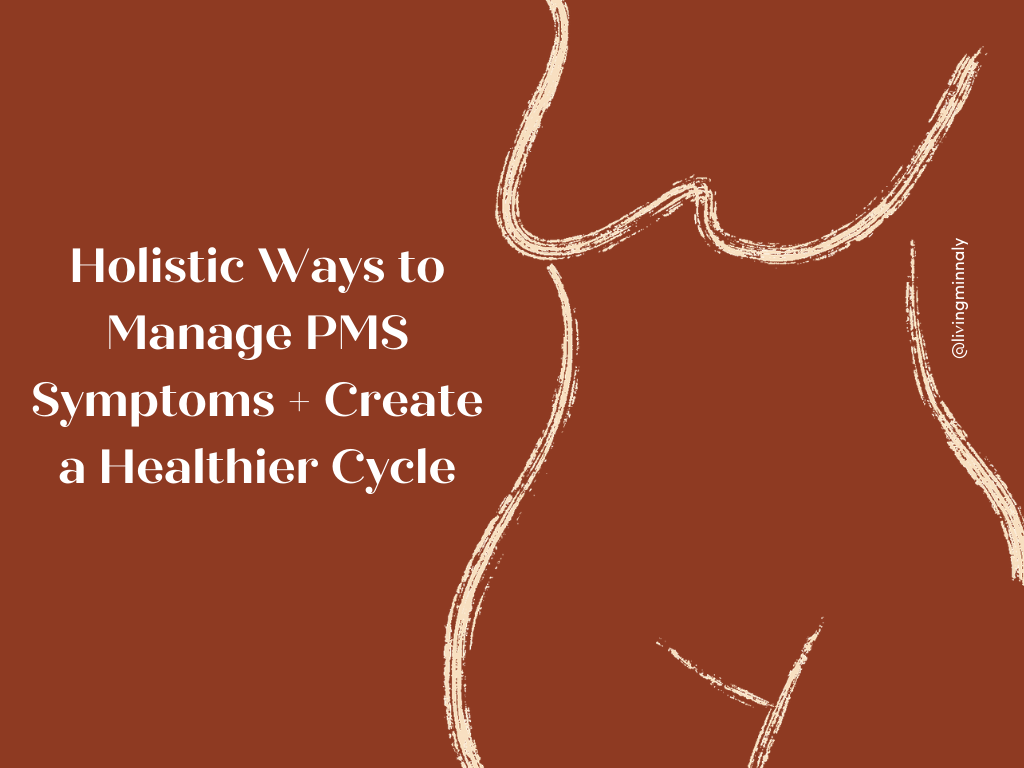How I Manage + Live with Endometriosis
Like countless women before me, I arrived at my “diagnosis” (I put that in quotation marks, and you’ll understand why shortly) of Endometriosis after being led astray with misdiagnosis and way too much misleading and contradictory information. If you want to read about what symptoms I had (starting 2.5 years ago), and my experience of my initial misdiagnosis of adenomyosis, here’s a blog post recapping that.
This is a long overdue blog post, sharing how I have and currently live with this disease that affects 1 in 10 women. It’s been hard for me to talk about this, because not only has it been challenging for my mental health on a personal level, but it also has taken me a while to figure out what has helped me through trial and error.
Endometriosis symptoms, severity, and experiences vary WIDELY amongst those of us who have this disease, so by no means is this a perfect professional guide or medical advice at all— I’m simply sharing all that I have learned about Endometriosis, what I’ve found helps me and my symptoms, and other resources that I have found along this process, in hopes that it helps any other Endo warriors out there feel less alone and more equipped with tools and information.
What is Endometriosis?
Endometriosis is a disease, in which tissue akin to the tissue that lines your uterus (the endometrium) is found outside of your uterus in places it's not supposed to be— the tissue is most commonly found in the pelvis, ovaries, fallopian tubes, bowels, or can even be found on the appendix, esophagus, or other organs.
While symptoms and pain vary, Endometriosis can be extremely painful because the endometrial-like tissue acts just like endometrial tissue (that lines your uterus) with a menstrual cycle: it thickens, breaks down, and bleeds. With the development / spread of the disease and infiltration of the Endometriosis in the body, it can create scar tissue and adhesions, which can result in surrounding organs and pelvic tissue sticking together.
Because of this, Endometriosis can be extremely painful, life-disrupting, and is one of the leading causes of infertility.
Symptoms of Endometriosis
Common symptoms of endometriosis are painful periods (heavy excessive bleeding, debilitating cramps, intense clotting), pain with intercourse, pain with bowel movements or urination, constipation / abdominal cramping, extreme bloating (casually referred to as “endo belly”), and extreme fatigue / brain fog.
Not everyone has the same symptoms or pain level, but that is not an indicator of how severe or widespread the disease is in your body. Endometriosis is also commonly misdiagnosed as pelvic inflammatory disease, IBS (irritable bowel syndrome), ovarian cysts, or adenomyosis.
Causes of Endometriosis
While there is no confirmed cause of endometriosis (thank you, lack of funding for health conditions that primarily affect women 🙃), there are several theories on why Endometriosis occurs, and risk factors— some of which can be found here. One of the books I mention in the resources section below discusses some of these theories— many experts agree that genetics play a component in this, so if you have family members who have awful periods or similar symptoms, it’s worth looking into.
Diagnosis of Endometriosis
Ready for this? It takes an average of 7-10 years for a person experiencing symptoms to be correctly diagnosed with endometriosis. That’s absurd (and unacceptable).
Here’s the kicker: in order to FORMALLY and conclusively confirm a diagnosis of Endometriosis, you need to have a laparoscopic surgery, so that they can biopsy + send the suspected Endometriosis to pathology testing to confirm it.
However, there are several other ways to test for suspected Endometriosis, that any Endo specialist / experienced OBGYN will and should do prior to confirming a need for surgery due to a high likelihood of Endometriosis. These methods are clinical exams that usually include a pelvic exam, transvaginal ultrasound, and sometimes an MRI (MRI typically will only show more advanced Endometriosis that result in frozen pelvis or organs adhering together). These exams, combined with an understanding of a patient’s specific symptoms (where the pain is, what triggers pain, etc)., can help your doctor better predict where the disease is located.
So technically since I have not had the surgery to confirm it, my “diagnosis” is only a conjecture, but my Endo specialist doctor said I very likely have it due to my symptoms and my ultrasound showing that my previous diagnosis of Adenomyosis was likely incorrect as during the additional ultrasound I had done, the walls of my uterus do not show signs of adenomyosis.
Management of Endometriosis
I have a super comprehensive blog post HERE on all my tips for helping your hormonal balance to reduce symptomatic pain from periods (and this applies to even people without Endometriosis that want a healthier menstrual cycle!). I recommend starting with that list!
I continue to do all of those things I mention in that post to the best of my ability, but I’ve also discovered a few new key additions to that list:
Elix Cycle Balance- made of a personalized blend of Chinese herbs, this formula is tailored to your personal symptoms and cycle based off the results of the quick health assessment you take online. Like all alternative medicine, it took some time to take true effect— for me, I really started noticing a difference in my 3rd cycle after consistently using Elix, but it has made my intolerable pain days much more manageable and shorter.
*Use MINNAL15 for 15% off your first order!Infrared Sauna- I used to go to infrared sauna sessions regularly, as it always helped my inflammation with my autoimmune disease and recovery with muscle aches + pains (the root of which is inflammation), but since the panini hit, I haven’t felt comfortable going to in-person sessions anymore. I got this infrared sauna blanket that has been a BLESSING to reap the benefits of infrared, but safely at home, and whenever I want. It’s an expensive up-front cost, but with regular use, it’s much more budget-friendly over time than going in for sauna sessions at a store. Inflammation is the crux of Endometriosis, so anything you can do to help lower inflammation is very helpful.
*Use LIVINGMINNALY for $75 off the sauna blanketPelvic Floor Therapy— I have not done this yet, but I plan to ASAP. Endometriosis pain can cause pelvic floor dysfunction, and pelvic floor dysfunction can further exacerbate painful symptoms. A lot of people suffering from endo pain find relief through pelvic floor therapy— and PLEASE note that pelvic floor therapy does NOT mean “kegels.” Pelvic floor exercises, like kegels, when performed incorrectly can actually do more harm than good— so please work with a professional for this.
NSAIDs— I’m someone who reaaaaally does not like to take OTC pain relievers unless absolutely necessary. I will say that Advil is a godsend on the days where my Endo is not manageable. Advil or Motrin are NSAIDs (non steroidal anti-inflammatory drugs), and are best for cramps and endo pains because cramps / endo pain are rooted in inflammation. This is why Tylenol (acetaminophen) is not as effective on this specific pain.
There are also additional management options, like hormonal therapies and hormonal birth control— many OBGYNs who are NOT experts in this disease will recommend these options as a “cure.” They are not a cure. These are simply options for management tools to help alleviate the symptoms when the symptoms are beyond tolerable and surgery is not an option.
Heating pad burns are all too common amongst Endo warriors— heat is sometimes the main relief you can get with the cramps.
“Cures” for Endometriosis
Let’s cut right to it— there is no cure for Endometriosis.
The closest thing to a cure for Endometriosis is to have a laparoscopic excision surgery— EXCISION, not ablation (read more on the surgeries here and why you should avoid ablation). Also, PSA— a hysterectomy will NOT be a cure for your endometriosis, as it’s just the removal of your uterus and not the other organs and areas that the endometriosis affects.
While there is no way to guarantee that you won’t need a second or additional surgery after your first (because new endo lesions can pop up), but finding an experienced endo specialist surgeon who will remove ALL of the endo lesions is your best option to avoid more surgeries down the road.
Additional Resources
WEBSITES
Endo Found— This is the foundation that was founded by the endo specialist I saw. Their website has a lot of information and resources on the disease, finding a specialist, education, research, and a lot more.
Nancy’s Nook — fair warning, I have heard VERY mixed reviews about this group and I do not utilize it. I know some people it’s been immensely helpful to, but I’ve also heard that this group has become fairly politicized and biased. Take it as you will!
BOOKS
The Doctor Will See You Now by Tamer Seckin — this book by my doctor made me feel very understood and helped me learn so much more about the disease.
Know Your Endo by Jessica Murnane — a really empowering book for those struggling to mentally come to terms with this disease and managing it.
Vagina Problems by Lara Parker— haven’t read this but it’s on my list, as I’ve heard it’s a wonderfully candid book on how Endo has impacted Lara’s life in all the personal ways.
In summation:
This disease sucks. There’s no way around that simple truth. It’s horrible, unfair, and absolutely all-encompassing at times. But you’re not alone, and I hear you. I hope these resources help you ❤️












